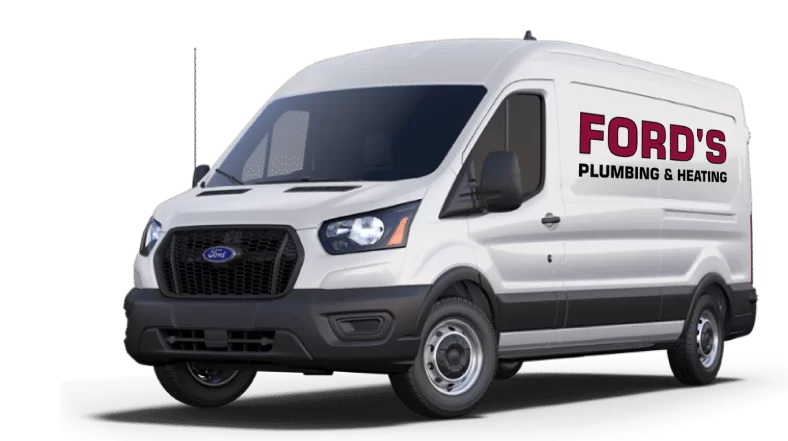If you’ve ever turned on the faucet only to be greeted by a weak trickle of water instead of a steady stream, you know how frustrating low water pressure can be. Not only does it make everyday tasks like washing dishes or taking a shower more time-consuming, but it can also indicate a more serious plumbing issue. As a homeowner, it helps to be aware of the possible causes of low water pressure so you can address them before they become bigger problems.
Below, we’ll walk you through the ten most common causes of low water pressure in your home and what you can do about them.
1. Clogged Pipes
One of the most common causes of low water pressure is clogged pipes. Over time, minerals like calcium and lime can build up inside your pipes, especially if you live in an area with hard water. These mineral deposits gradually restrict the flow of water, causing a drop in pressure.
How to spot a clog: If the low water pressure is isolated to one or two faucets, it’s likely due to a clogged pipe. If your entire house is affected, the issue might be deeper in your plumbing system.
Prevention Tip: Consider installing a water softener if you have hard water. Regularly cleaning or flushing your pipes can also help prevent clogs from forming.
2. Corroded Pipes
If your home has older plumbing, corrosion could be to blame for your low water pressure. This is especially true if your home has galvanized steel pipes, which are known to corrode over time. As pipes corrode, they narrow, reducing the flow of water.
Signs of pipe corrosion: In addition to low water pressure, you might notice rusty-colored water, frequent leaks, or strange tastes or odors in your water.
What to do: Corroded pipes usually need to be replaced. If your home has old galvanized pipes, it might be time to upgrade to more modern materials like copper or PEX.
3. Leaking Pipes
A hidden leak can cause a significant drop in water pressure. Leaks divert water away from your faucets, leaving you with less pressure than you should have. Even a small plumbing leak can impact water pressure, so it’s important to track down and repair leaks as soon as you suspect them.
How to spot leaks: Check for water stains on your walls or ceilings, wet spots in your yard, or unexplained increases in your water bill.
Fixing a leak: If you find a leak, shut off your water and call a plumber. Depending on where the leak is, you might be able to patch it yourself, but some leaks require professional repair.
4. Water Supply Issues
Sometimes, the problem isn’t inside your home at all—it could be an issue with your local water supply. Municipal water systems occasionally experience drops in pressure, especially during periods of high demand (like summer, when everyone’s watering their lawns).
How to check: If your neighbors are also experiencing low water pressure, it’s likely a supply issue. Contact your water provider to see if they’re aware of the problem and when it might be resolved.
5. Partially Closed Shutoff Valve
It might seem obvious, but a partially closed shutoff valve can easily cause low water pressure in your home. If your main shutoff valve (or any of the inline valves) isn’t fully open, it restricts the amount of water flowing through your system.
How to fix it: Check the main shutoff valve, which is usually located near your water meter or where the main water line enters your house. Make sure it’s fully open. Also, check any other valves on your plumbing system to ensure they aren’t accidentally closed.
6. Faulty Pressure Regulator
Not every home has a pressure regulator, but if yours does, it could be the culprit behind your low water pressure. Pressure regulators help maintain a consistent pressure level in your plumbing system, but if the regulator is faulty, it might reduce the pressure too much.
How to check: Use a water pressure gauge to test the pressure in your home. If it’s lower than it should be, the regulator might need to be adjusted or replaced.
Tip: Replacing a faulty pressure regulator is a job best left to a professional plumber. It requires specialized tools and knowledge of your plumbing system.
7. Water Heater Issues
If you’re only experiencing low pressure when using hot water, the problem could be your water heater. Over time, sediment can build up in the water heater tank, reducing its efficiency and water pressure.
How to fix it: Regularly flushing your water heater can help prevent sediment buildup. If your water heater is old and struggling to maintain pressure, it might be time for a replacement.
Pro Tip: Flushing a water heater is a straightforward DIY task, but if you’re not comfortable doing it yourself, a plumber can help.
8. Fixture-Specific Problems
Sometimes the problem isn’t your plumbing system at all—it’s the fixtures themselves. Clogged aerators or showerheads can reduce water pressure without affecting the rest of your home.
How to fix it: Unscrew the faucet aerator or showerhead and soak it in vinegar to dissolve mineral deposits. If the problem persists, you might need to replace the fixture entirely.
9. Plumbing Design Flaws
In some cases, the issue could be poor plumbing design. If your home’s plumbing system has too many bends, wrong-sized pipes, or is simply outdated, it can lead to reduced water pressure.
What to look for: If you’ve recently moved into a new home or had plumbing work done, and the water pressure has been low from the start, poor design might be to blame.
What to do: In some cases, a professional plumber can reconfigure your plumbing system to improve pressure. This might involve replacing or rerouting certain pipes to ensure optimal water flow.
10. Water Pressure Reduction Due to High Demand
Sometimes, low water pressure isn’t a plumbing problem at all—it’s just a matter of too many people using water at once. If you’re running the dishwasher, laundry, and taking a shower all at the same time, it can overwhelm your home’s plumbing system and reduce water pressure.
How to fix it: Try staggering your water usage. For example, run the dishwasher at night when no one is showering, or wait until the washing machine finishes before using the sink.
Preventing Low Water Flow
Low water pressure can often be prevented with regular plumbing maintenance and smart water usage habits. Here are a few tips to keep your water flowing at full force:
- Regularly inspect your plumbing for leaks or signs of corrosion. Early detection can save you from major problems down the line.
- Flush your water heater annually. This helps prevent sediment buildup that can reduce pressure.
- Install a water softener if you have hard water. This reduces mineral buildup in your pipes and fixtures.
- Use drain screens to catch debris and prevent clogs that can impact water flow.
- Have your pressure regulator checked regularly. Ensure it’s functioning properly to maintain consistent water pressure.
When to Call a Plumber for Water Flow Issues
If you’ve tried the DIY fixes mentioned above and your water pressure is still low, it’s time to call a professional plumber. Persistent low water pressure can indicate a more serious issue, like a hidden leak or corroded pipes, that requires expert attention.
A plumber will be able to diagnose the problem and recommend the best course of action, whether that’s repairing a leak, replacing corroded pipes, or upgrading your water heater. Don’t wait until a small issue becomes a major (and expensive) plumbing emergency!
Contact Ford’s If You Have Low Water Pressure In Your Home
Low water pressure is a common but frustrating issue for many homeowners. By understanding the potential causes and addressing them promptly, you can ensure your water pressure stays strong and steady. Whether it’s a simple fix like cleaning a clogged aerator or a more complex issue like pipe corrosion, maintaining your plumbing system is key to keeping the water flowing smoothly in your home.
If you’re dealing with persistent low water pressure or need help diagnosing the cause, don’t hesitate to contact Ford’s Plumbing for assistance.



















